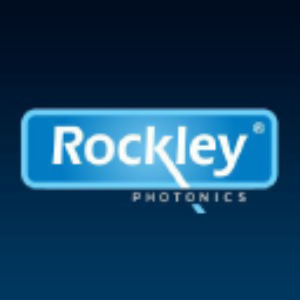Rockley Photonics Demonstrates Compact 4-Kelvin Silicon Photonics Modulator Enabling Interconnect Technologies for Ultra-sensitive Image Detection and Sensing Devices
- Groundbreaking technology supports infrared and hyperspectral image detection and sensing devices to view images more clearly, at longer distances, and in low-light situations.
- In collaboration with UC Santa Barbara, experiment shows first-time demonstration of a compact (micron-sized), monolithic silicon photonic electro-absorption-modulator maintaining its performance down to 4 Kelvin (-269.15 Celsius), enabling transmission of signals at cryogenically cooled temperatures with a compact, photonic integrated circuit.
- Rockley’s technology platform allows detection and sensing devices to be smaller in size and weight, and lower in power consumption.
UC Santa Barbara’s project utilizes Rockley’s powerful technology and will potentially advance detection and sensing capabilities in devices for a range of applications that require ultra-sensitive sensors. Possible applications include infrared and hyperspectral imagers and cameras that are used for night and day surveillance, aerial search and rescue, environmental remote sensing and chemical detection, ultra-sensitive neutrino detectors in particle accelerators, as well as interconnects for quantum computers.
The cryogenic modulation experiment showed that the strong modulation of Rockley’s silicon photonics electro-absorption modulator at room temperature is maintained when it is cooled down to 4 Kelvin (-269.15 Celsius, -452.47 Fahrenheit) with almost no performance degradation. At these low temperatures, signal noise in camera detector arrays is reduced dramatically, resulting in increased sensitivity, and enabling devices or cameras to view clearer images and the ability to see longer distances and in low light. The ability of Rockley’s platform to maintain good performance and capture data at this very low temperature means that Rockley’s photonic integrated circuit technology can be used to make these ultra-sensitive detection devices smaller in size and weight, have a lower cost, and operate with lower power consumption.
“At UC Santa Barbara, our research is focused on closely integrating electronics and photonics to push the boundaries of speed and efficiency for the photonic links and optical networks that data centers, computers, and sensors depend upon to share and move data,” said
“Rockley has been innovating in photonics technology for many years and I am not surprised that our pioneering work has generated interest from academic research and other industries beyond health monitoring and wearables,” said Dr.
“The ability of Rockley’s silicon photonics platform to capture data at 4 Kelvin with good performance will lead to technological advancements in image detection and sensors, including hyperspectral imagers and cameras that are used by the department of defense, defense and aerospace industry, NASA, and environmental agencies,” said
More information about Rockley’s digital health monitoring solution is available here: https://rockleyphotonics.com/healthcare-sensing/.
About
Formed in 2013,
To learn more about
Cautionary Note Regarding Forward-Looking Statements
Statements in this press release that are not historical facts constitute “forward-looking statements” for purposes of the safe harbor provisions of the Private Securities Litigation Reform Act of 1995. These forward-looking statements include statements regarding Rockley’s future expectations, beliefs, plans, objectives, and assumptions regarding future events or performance. The words “accelerate,” “advance,” “anticipate,” “believe,” “can,” “capability,” “continue,” “could,” “develop,” “enable,” “enhance”, “estimate,” “eventual,” “expand, “expect,” “focus,” “forward,” “future,” “goal,” “ground-breaking” “intend,” “may,” “might,” “opportunity,” “outlook,” “plan,” “possible,” “position,” “potential,” “predict,” “project,” “revolutionize,” “seem,” “should,” “trend,” “vision,” “will,” “would” or other terms that predict or indicate future events, trends, or expectations, and similar expressions or the negative of such expressions may identify forward-looking statements, but the absence of these words or terms does not mean that a statement is not forward-looking. Forward-looking statements in this press release include, but are not limited to, statements regarding the following: (a) possible applications for our technology and the extent to which we may pursue potential opportunities; (b) the extent to which our technology will lead to smaller devices with lower power consumption at a lower cost; and (c) the extent of any additional technology advances based on our platform.
Forward-looking statements are subject to several risks, assumptions, and uncertainties (many of which are beyond Rockley’s control) that may cause actual results or performance to differ materially from those expressed or implied by these forward-looking statements. These risks, assumptions, and uncertainties include, but are not limited to, the factors described under the heading “Risk Factors” in our Annual Report on Form 10-K for the year ended
View source version on businesswire.com: https://www.businesswire.com/news/home/20221116005088/en/
Media
Rainemakers
Telephone: +1 415-349-7432
Email: rockleyphotonics@rainemakers.com
Investors
Telephone: +1 626-995-0001
Email: investors@rockleyphotonics.com
Source:







